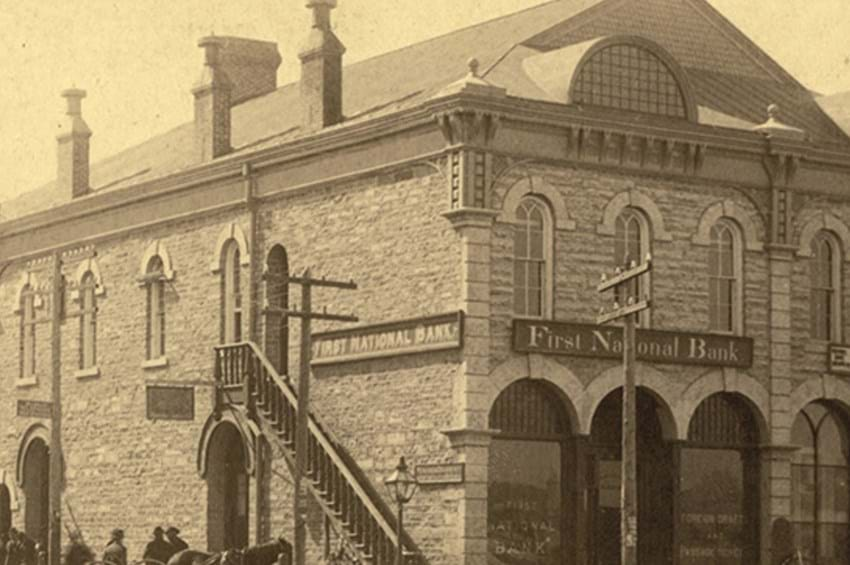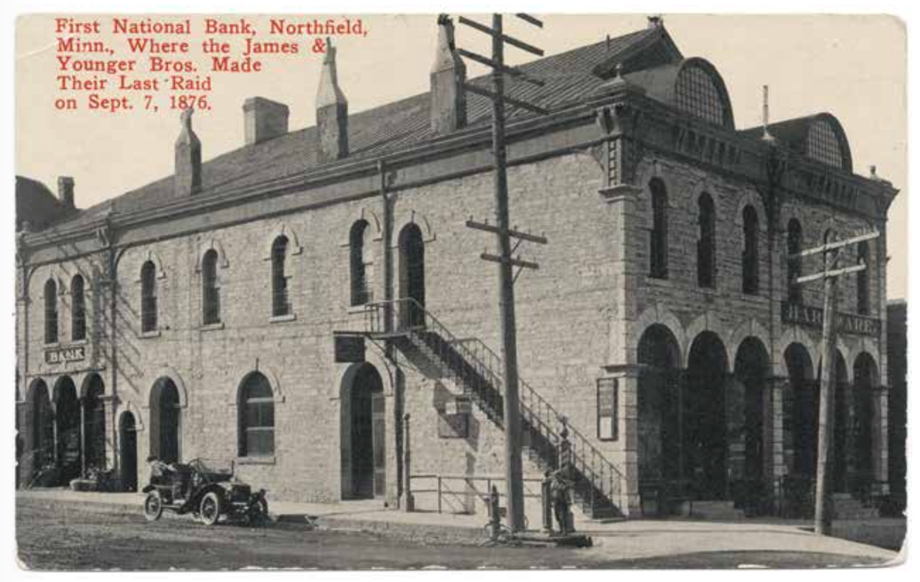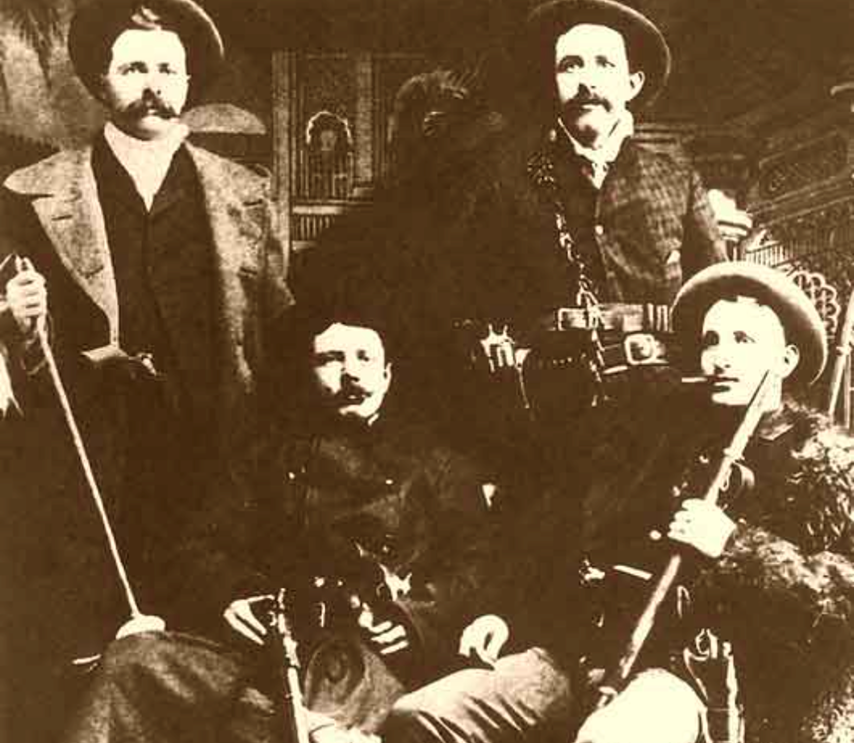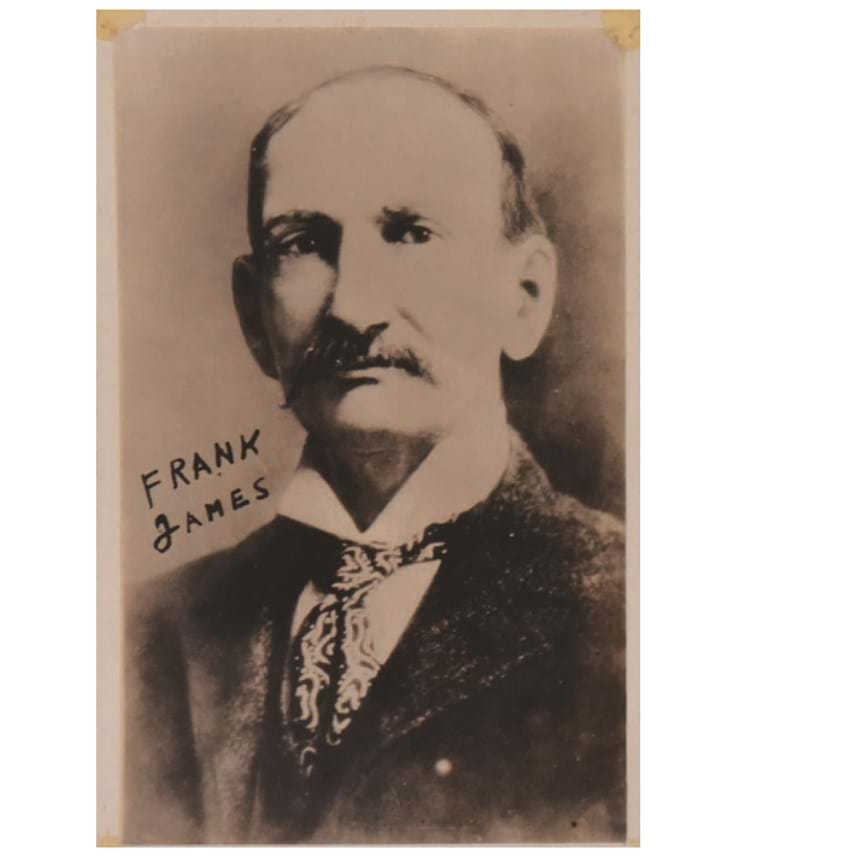Frank James & The Northfield Bank Robbery September 1876
26/10/2023 | Matthew Tredwen

Immortalised in the 1972 movie, The Great Northfield Minnesota Raid, the bank robbery was one of the most famous carried out by the James-Younger gang. 1876 was a year of great change in America’s history. America celebrated its 100th birthday with the Centennial Exposition in Philadelphia, George Custer was killed at the Battle of Little Big Horn, and Rutherford B. Hayes defeated Samuel Tilden for the presidency. Tilden won the popular vote, but Hayes won the electoral college vote and became the 19th president of the United States.

The Town
Northfield in 1876 was a growing Southern Minnesota community. By this time the town had two colleges and saw the completion of a railroad through town. The town also had many prominent business leaders and a healthy bank. It was the bank that drew the attention of America’s most notorious bank and train robbers: the James-Younger Gang.
On September 4, the gang rode into Mankato to rob the 1st National Bank of Mankato (the gang’s first choice). However, the gang decided to abort the robbery and headed for its second choice, Northfield. Little did the gang members know that this decision would end all of their careers as outlaws and result in the deaths of three gang members and two Northfield citizens.

The Raid
On September 7, 1876, eight bandits rode into Northfield to rob the First National Bank. It was a sunny Thursday afternoon. What would later be called a “textbook James-Younger robbery” began with three of the gang members entering the bank at 2 p.m. and announcing that they were holding up the bank.
The desperadoes ordered the three bank employees to open the safe, but were told that the door was locked and couldn’t be opened. Meanwhile, local citizens on the street began to arm themselves after a merchant discovered the robbery in progress and shouted, “Get your guns, boys — they’re robbing the bank!”
Upon this discovery, two gang members sprang to their saddles and began firing their pistols and yelling for everyone to leave the area or be shot. This forced the remaining robbers to enter the fray. The first to fall was a Swedish immigrant named Nicholas Gustafson. He was wounded in the head and died several days later.

A Swift Defeat
When it was over after just seven minutes, two robbers were dead in the street and two more were badly wounded. The remaining six outlaws fled southwest, triggering the largest manhunt in U.S. history. Frank and Jesse James were not caught after the failed raid, but the Younger brothers were captured, and Charlie Pitts was killed two weeks later during a furious gunfight near Madelia, Minnesota.”
Following the raid, Frank James Smith & Wesson Schofield revolver was picked up by one of the witnesses, Philip Gregory Carroll. In this affidavit Mr. Carroll Ray states that his grandfather, Philip Gregory Carroll, witnessed the famous James-Younger Gang robbery of the First National Bank of Northfield, MN. Mr. Carroll was on a buying trip on Sept. 6, 1876 and stayed in a hotel at corner of Division St. & Bridge Square, directly across the street from the bank. On Sept. 7, 1876 he states that Mr. Carroll was standing on the hotel veranda when it was shouted “They’re robbin’ the bank.” Mr. Carroll took cover behind a buckboard and waited for the shooting to stop. He states that after about one minute of shooting several men rushed out of the bank, firing as they came, with others converging from concealed positions and all sprang to their horses. One of the men, Clel Miller, fell and another, a tall man, later identified as Frank James, dropped his gun as he mounted his horse. After they rode away Mr. Carroll rushed toward the bank and on his way picked up this Smith & Wesson revolver and kept it until 1941, when he gave it to Mr. Ray, his grandson.

